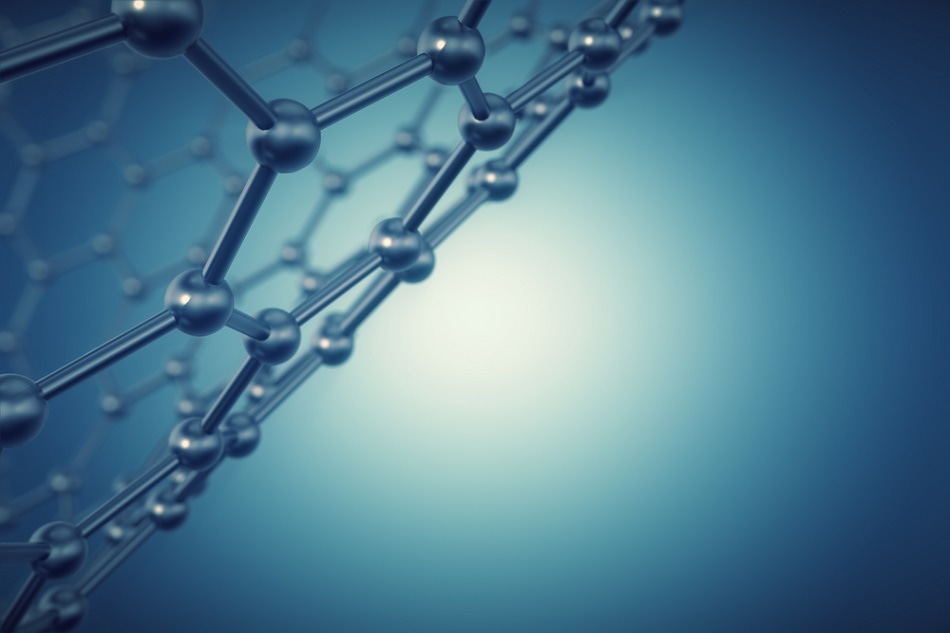 Rost9/ Shutterstock.com
Rost9/ Shutterstock.com
Researchers have long thought that graphene, a unique form of carbon, repels water, a property known as being hydrophobic.
However, a new study published in the journal Advanced Materials has revealed that graphene floating atop water actually attracts it, meaning graphene is actually ‘hydrophilic’.
Made from graphite, the type of carbon fond in pencils, graphene is one atom thick with a honeycombed molecular structure and its unique composition gives it profound qualities. Researchers likely thought graphene is hydrophobic because graphite is hydrophobic, and yet past studies have provided mixed results on graphene-water interactions.
In the new study, material scientists form Leiden University in the Netherlands found the exterior of graphene is hydrophilic, given that the surface of the water is clean and smooth. This discovery is particularly noteworthy for potential applications of graphene, the study team said. Graphene's extreme thinness and unique structure make it well suited for use in a wide range of applications, including as biosensors to decipher genetic material, water filters, membranes of fuel cells and bulletproof armour. In many of these applications, graphene would be subjected to water on both sides.
The way graphene is typically engineered, created on metal and placed on a solid support like a silicon wafer, likely contributed to the belief that it is water repellent, the study team said. During transfer, graphene can become damaged or contaminated, which can have an impact on the wetting behaviour, a phenomenon that inspired this newly-published research.
To see if the exterior of an intact layer of graphene is hydrophilic, study researchers placed a droplet of water onto a sample. The team then looked at the curvature of the droplet to see if the graphene surface is water repellent or if it attracts water. Because a "heavy" water droplet can tear the thin hyper-thin layer of graphene, the researchers used ice or hydrogel to support their graphene sample.
In addition to measuring the contact angle between the water droplet and the graphene layer, the Dutch study team also tested other liquids with different polarity. The researchers ultimately concluded that all molecular interactions of the water affect the water molecules in the droplet above the graphene. This result is the due to graphene's extreme thinness, and it clarifies why graphene is hydrophilic on water, the researchers said.
The study team added that their work could have massive implications for the use of graphene in water-oriented applications. Engineers looking to leverage graphene's properties will have to think about a totally new starting point; graphene is hydrophilic, not hydrophobic.
The new Dutch study comes on the heels of a previous report coming out of Brazil that addressed a raging debate on graphene defects, which can affect its interactions with water. Studies on structural defects by multiple researchers using different models have produced mixed results, which resulted in a bit of controversy. The Brazilian study came to a conclusion that lined up with all theoretical models and was compatible with experimental results.
The controversy pertained to the vacancy created by removing a single carbon atom from a graphene sheet, which creates a weak or strong magnetic moment; and the strength of the magnetic interaction between vacancies. The vacancy causes the surrounding atoms to reorganize themselves into new combinations to compensate for the missing atom, creating electron clusters referred to as "floating orbitals" at the vacancy.
The Brazilian team were able to resolve competing results by combining two calculations methods from quantum mechanics: the Hartree-Fock (HF) method and density functional theory (DFT). Using computer models, the hybrid approach generated the same result for all models used to describe graphene defects and matched the experimental data from various studies.
Disclaimer: The views expressed here are those of the author expressed in their private capacity and do not necessarily represent the views of AZoM.com Limited T/A AZoNetwork the owner and operator of this website. This disclaimer forms part of the Terms and conditions of use of this website.